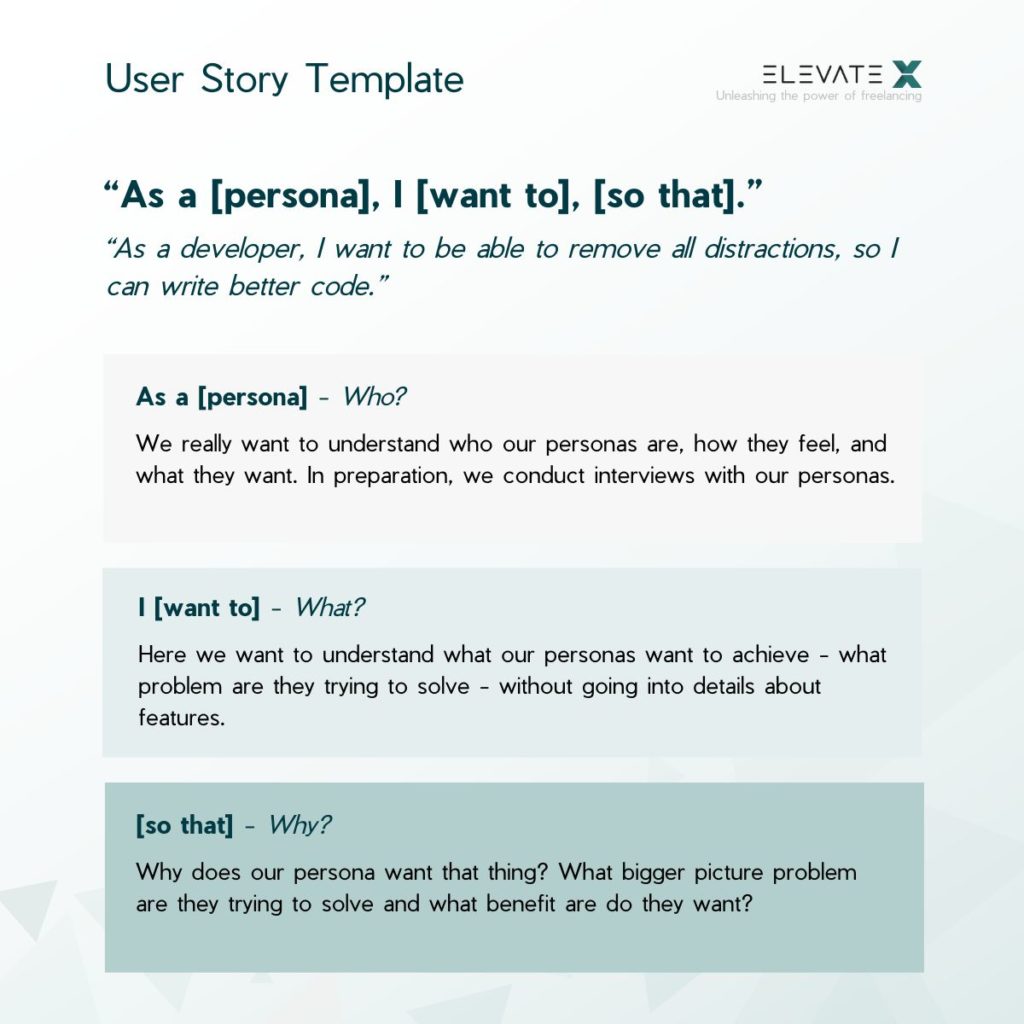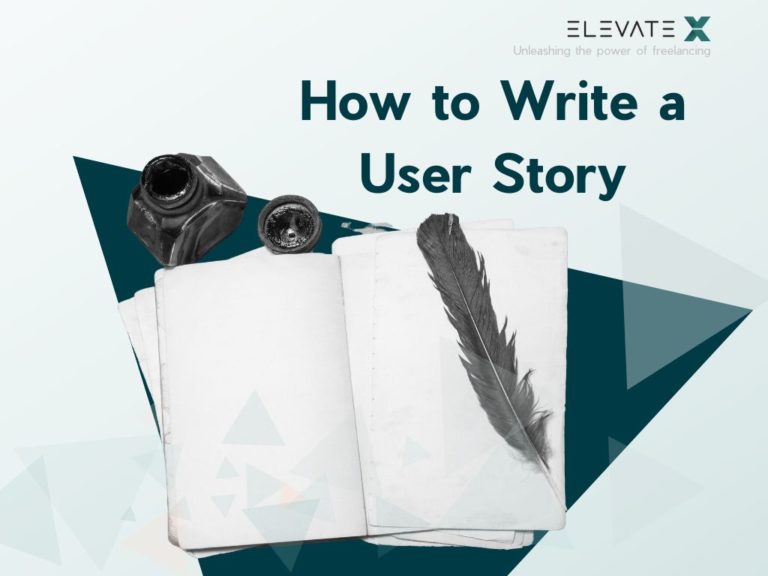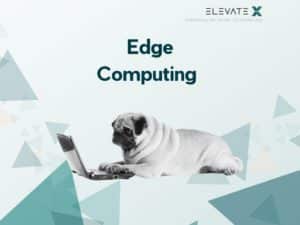The end-user must always come first in an agile process. Organizations employ user stories to aid in that. For example. Scrum Product Backlog entries are frequently written in the form of User Stories. In this article, you will learn everything there is to know about the Scrum User Stories.
What Is a Scrum Master?
A Scrum Master is a professional who leads a team using Agile project management through the course of a project. To ensure a successful output, he encourages all team member and leadership motivation and communication.
What Does a Scrum Master Do?
Scrum is an agile development methodology used to create large projects, most frequently software. Sprints, short development cycles used in the Agile project management technique, lead to continuous product or service improvement. There are numerous Agile frameworks, and Scrum is a well-liked choice for projects that move quickly. The Scrum Master’s competence determines the process’s outcomes, which depend on the methodology’s high degree of collaboration and requirement for effective processes.
Agile approaches may have originated in IT firms, but Scrum Master positions are available globally in a wide range of industries and for a wide range of organizations.
What Is a User Story?
- A “User Story” is often described as a user’s experience with a product.
- User Stories make the interaction between users and developers that is required to create a product apparent.
- It is one of many methods for describing a Product Backlog item. It makes communication between the team and the customer easier.
We already discussed the definition of scrum user stories. Basically, the product owner usually creates them to describe the intended product or software from the user’s point of view. The basic question is, “What does the user want the software to look like?”
While user stories are not an official working technique in Scrum, this method is popularly used to achieve a clearer picture of the intended goal. Additionally, we distinguished different levels: Epic, Story and Task. Let’s investigate that a bit more in detail.
Epic
This stage is too abstract to be achieved in one sprint. The product owner, therefore, creates several small user stories from this stage.
Story
The story is used to estimate the requirements for the realization. A story contains the requirements in different small texts.
Task
The story can be broken down into individual “tasks”. Each task should be completed within a certain period. When all tasks of a story are completed, the story is also complete.
Sprints vs. Epic in Scrum
An Epic is related to User Stories, which are derived from Extreme Programming. There are two distinct definitions of an Epic. In some cases, it refers to a very large User Story that must be broken down and decomposed into smaller User Stories that represent deliverable value-added work. In other cases, it can refer to a grouping of related User Stories.
The Sprint is a Scrum concept. It is a timeframe that includes Sprint Planning, Sprint Review, Sprint Retrospective, and Daily Scrum events, as well as effort spent on backlog refinement and work implementation. A timebox has a start and an end point that is fixed. Scrum defines a Sprint as a time period of no more than one month during which the team produces a working product suitable for handover or release.
What Is the Difference Between User Stories and Use Cases?
Despite having very similar sounds and appearances, user stories and use cases differ somewhat from one another.
While use cases and user stories both assist teams in planning work and identifying resources needed to execute work, their formats are very different. User stories are straightforward, succinct accounts written from the viewpoint of the client. They mark the start of a more extensive procedure that describes a customer’s interactions or behaviors while using your product. Use cases provide a great deal more context. A considerably more involved technique to help teams comprehend how a user or customer interacts with a system is the creation of specific use cases.
Why Should I Create User Stories?
- Stories keep the user in mind
A list of tasks to be completed keeps the team focused, while a collection of tales keeps the team focused on finding solutions for actual users. - Stories promote cooperation
The team can select how to best serve the user and accomplish the end objective once the end goal has been established. - Creative solutions are fueled by stories
The team is encouraged by stories to think critically and imaginatively about the best ways to achieve a goal. - Stories give things a boost
The development crew enjoys a minor challenge and a small win with each new story, which builds momentum.
Like many of the development approaches that are now standard in contemporary software development, User Stories were first created in the Extreme Programming (XP) community. An XP Team concentrates on providing a final product increment, just like a Scrum Team does. The new product increment enhances the value for the user, at which point the team has reached the greatest level of “done.” The team must therefore concentrate on how the user will interact with the product when designing the relevant functionality.
A user story doesn’t focus on the implementation or realization of the entire project. Furthermore, whether a database, microservice, or GUI component is required for the implementation doesn’t really matter to the user. He evaluates a product’s success based on what it can achieve for him.
How to Write User Stories in Scrum

Agile user stories typically consist of few phrases with the following format:
As an [actor], I [want|must] [action] so that [achievement]
Or short:
As an [actor], I [want|must] [achievement]
Actor: The user story’s “owner” Although it is frequently a user, it is advised to be more explicit in this case. The introduction of identifiable actors, such as “Administrator,” “Logged in Customer,” and “Unauthenticated visitor,” makes the user story easier to comprehend and places it in its proper context.
Action: The desired behavior of the actor. It is possible to prefix an action with “must” if it is required. If not, “desire” is used.
Achievement: What the actor hopes to accomplish by carrying out the action. This is the outcome of doing the action as perceived from the actor’s perspective.
The role simulates how a person might engage with the system. The system’s behavior is referred to by the desire or action. Most user stories have distinct versions of this action. Accordingly, that relates to the actual result or advantage, which is unrelated to the system and non-operational. The benefit statement could be present in several stories.
User Story Maps and Why You Should Use It
User story mapping is a popular user story management technique. The user story tool enables you to create multiple levels and dimensions for a product backlog by dividing user needs into user activities, user tasks, epics, and user stories. Typically, an agile development team will use a story map in collaborative meetings to identify the desired outcomes for end-users.
Single-list product backlogs are a bad method for classifying and prioritizing the work that needs to be done. A more sophisticated structure is required.
- An agile team can efficiently schedule product releases and manage their product backlog by using the potent tool known as a user story map.
- It documents the interactions that customers have with the product, including the actions and jobs they carry out using it.
- The team will be on the same page from the beginning of the project through the ongoing production of new releases if a story map is jointly created.
The Famous 3 C's of User Stories in Scrum

You may or may not have heard about the 3 C’s, that could help you write a successful user story. There are already many lengthy explanations out there, so I will just address them in a quick, understandable way.
Card, Conversation and Confirmation. The three Cs go back to Ron Jeffries, who described them as early as 2001 in his blog article Essential XP: Card, Conversation, Confirmation. Even today, they are still considered important basic rules for the development of user stories, in addition to the INVEST criteria.
Card
- A written description of the story used for planning and estimation. It should be short and informative.
- Often handwritten on index cards, this practice keeps the user stories concise.
- The information on the card won’t be complete or will be in excess.
- The material on the card will just be sufficient to enable everyone grasp the story and the requirement.
Conversation
- Taking place at different times and places during a project between the various people concerned by a given feature of a software product: customers, users, developers, testers.
- Largely verbal, but most often supplemented by documentation.
Confirmation
- Acceptance criteria capture the essential requirements and help test the created product to ensure that it meets the defined criteria.
- Typically developed by the product owner and expanded during the backlog refinement.
Conclusion
User stories are not meant to replace full specifications with a marvelous technique that achieves the same result in half the time. They are intended to serve as a jumping-off point for further improvement and specification by Scrum Teams. Various tools such as the 3Cs Card, Conversation, Confirmation, and User Story Maps help you achieve the main goal of Scrum User Stories: to activate communication and share knowledge in order for the team to continue developing useful functionality.








